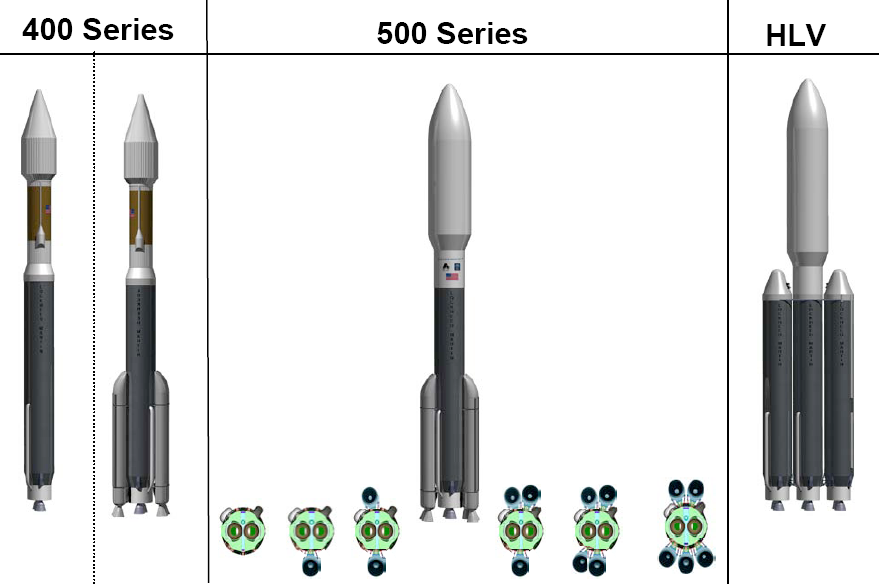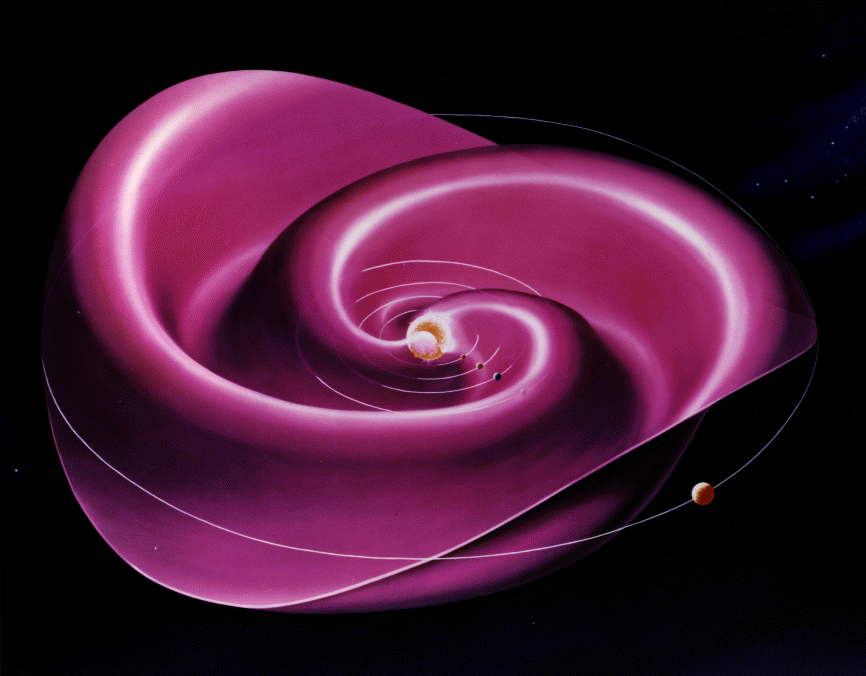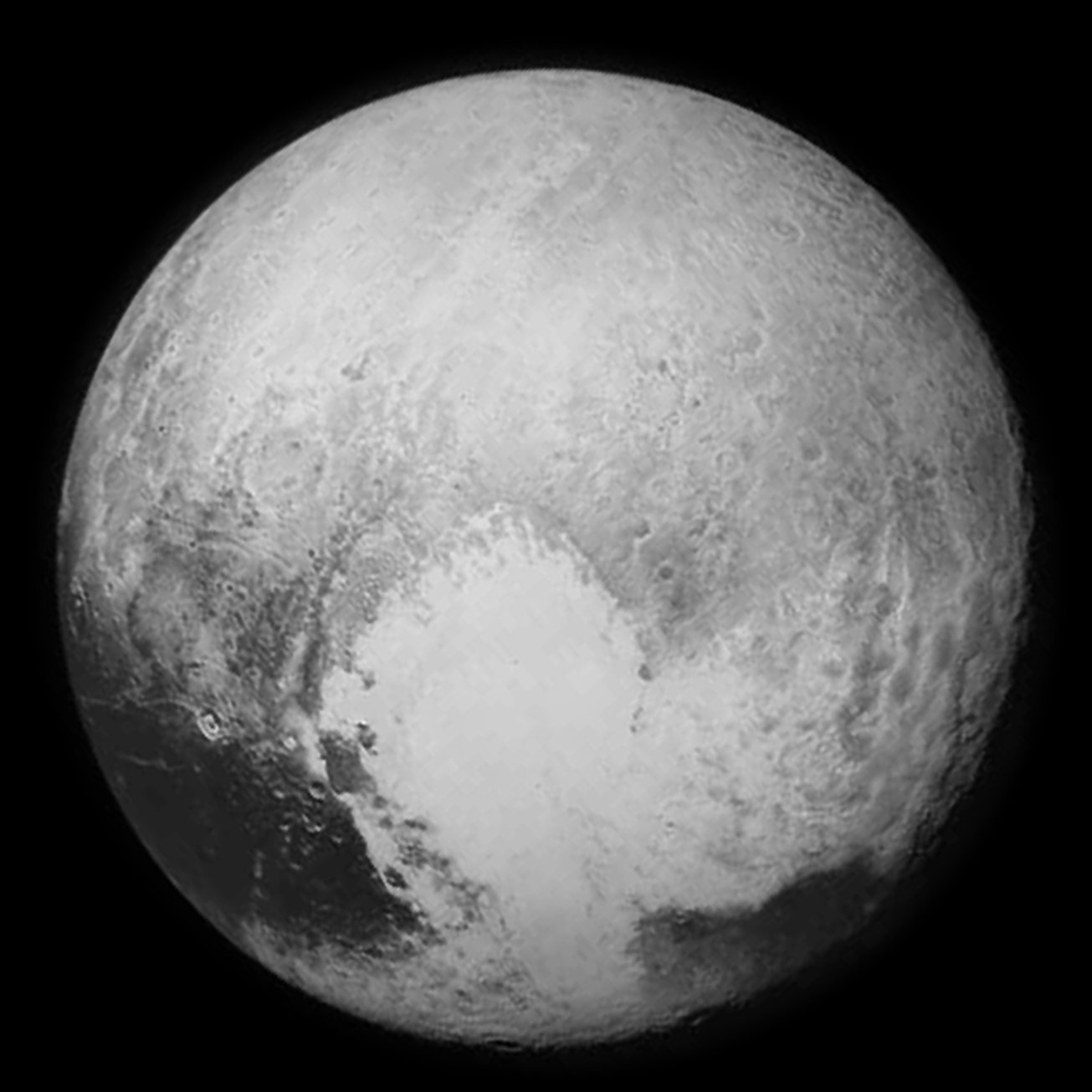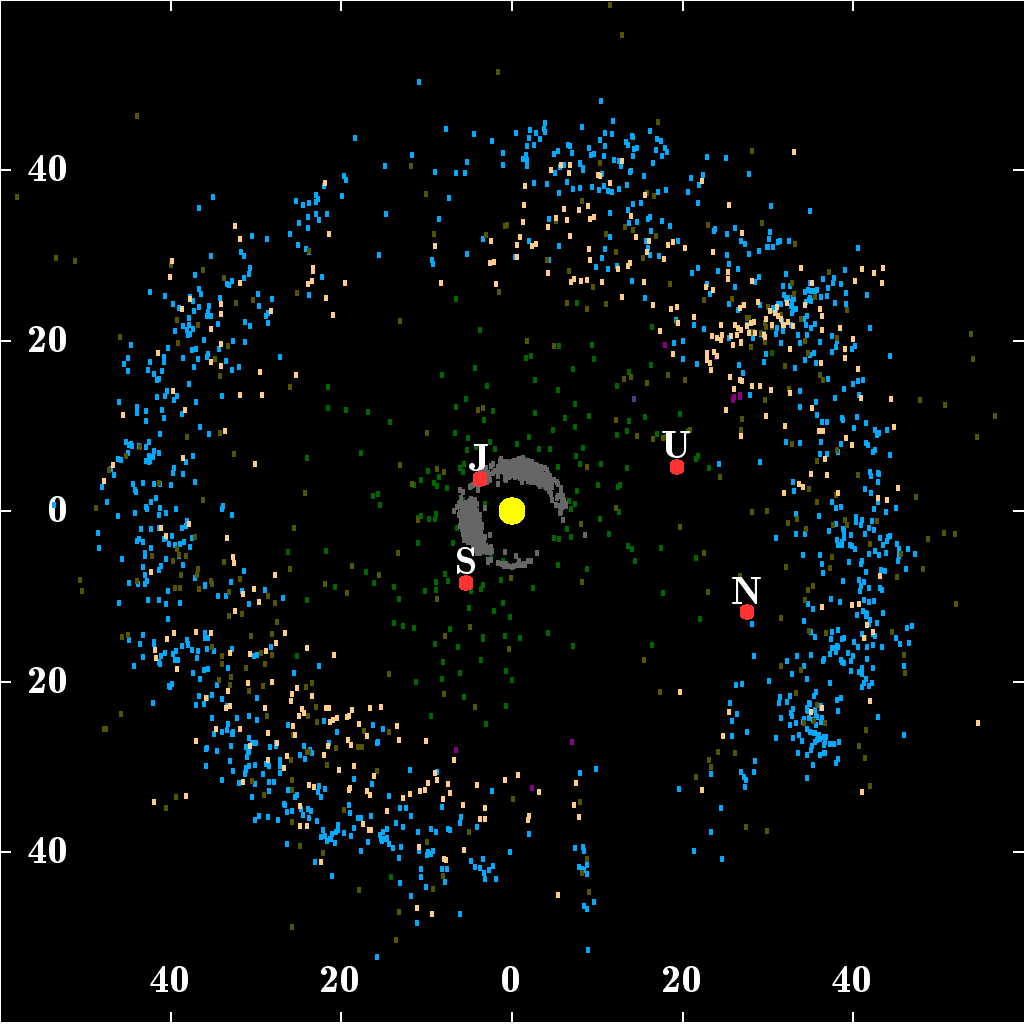|
List Of New Horizons Topics
List of ''New Horizons'' topics is a list of topics related to the '' New Horizons'' spacecraft, an unmanned space probe launched 2006 to Pluto and beyond. On January 19, 2006 it was launched directly into a solar-escape trajectory at from Cape Canaveral using an Atlas V version with 5 SRBs and Star 48B thirdstage . ''New Horizons'' passed the Moon's orbit in just nine hours. * 132524 APL, Distant observation target *15810 Arawn (1994 JR1), Distant observation target * 2011 HM102, Neptune Trojan considered as an observation target * 2011 KW48, distant observation target * 2014 MT69, former candidate for ''New Horizons'' flyby. * 2014 OS393, former potential flyby target * 2014 PN70, former potential flyby target *486958 Arrokoth, flyby on New Year's Day 2019 * Alice (spacecraft instrument), one of seven major instruments on ''New Horizons'' * Alice Bowman, ''New Horizons'' staff * AJ-60A, solid rocket booster of which five were used in the ''New Horizons'' launch. *Atlas V ... [...More Info...] [...Related Items...] OR: [Wikipedia] [Google] [Baidu] |
New Horizons 1
''New Horizons'' is an interplanetary space probe that was launched as a part of NASA's New Frontiers program. Engineered by the Johns Hopkins University Applied Physics Laboratory (APL) and the Southwest Research Institute (SwRI), with a team led by Alan Stern, the spacecraft was launched in 2006 with the primary mission to perform a flyby study of the Pluto system in 2015, and a secondary mission to fly by and study one or more other Kuiper belt objects (KBOs) in the decade to follow, which became a mission to 486958 Arrokoth. It is the fifth space probe to achieve the escape velocity needed to leave the Solar System. On January 19, 2006, ''New Horizons'' was launched from Cape Canaveral Space Force Station by an Atlas V rocket directly into an Earth-and-solar escape trajectory with a speed of about . It was the fastest (average speed with respect to Earth) man-made object ever launched from Earth. It is not the fastest speed recorded for a spacecraft, which as of 20 ... [...More Info...] [...Related Items...] OR: [Wikipedia] [Google] [Baidu] |
Atlas V
Atlas V is an expendable launch system and the fifth major version in the Atlas (rocket family), Atlas launch vehicle family. It was originally designed by Lockheed Martin, now being operated by United Launch Alliance (ULA), a joint venture between Lockheed Martin and Boeing. Atlas V is also a major NASA launch vehicle. It is America's longest-serving active rocket. In August 2021, ULA announced that Atlas V would be retired, and all 29 remaining launches had been sold. , 19 launches remain. Each Atlas V launch vehicle consists of two main stages. The first stage (rocketry), first stage is powered by a Russian RD-180 engine manufactured by NPO Energomash, Energomash and burning kerosene and liquid oxygen. The Centaur (rocket stage), Centaur upper stage is powered by one or two American RL10 engine(s) manufactured by Aerojet Rocketdyne and burns liquid hydrogen and liquid oxygen. The Star 48 upper stage was used on the ''New Horizons'' mission as a third stage. strap-on booster, ... [...More Info...] [...Related Items...] OR: [Wikipedia] [Google] [Baidu] |
Mongoose-V
The Mongoose-V 32-bit microprocessor for spacecraft onboard computer applications is a radiation-hardened and expanded 10–15 MHz version of the MIPS R3000 CPU. Mongoose-V was developed by Synova of Melbourne, Florida, USA, with support from the NASA Goddard Space Flight Center. The Mongoose-V processor first flew on NASA's Earth Observing-1 (EO-1) satellite launched in November 2000 where it functioned as the main flight computer. A second Mongoose-V controlled the satellite's solid-state data recorder. The Mongoose-V requires 5 volts and is packaged into a 256-pin ceramic quad flatpack ( CQFP). Examples of spacecraft that use the Mongoose-V include: * Earth Observing-1 (EO-1) * NASA's Microwave Anisotropy Probe (MAP), launched in June 2001, carried a Mongoose-V flight computer similar to that on EO-1. * NASA's Space Technology 5 series of microsatellites * CONTOUR * TIMED * Pluto probe New Horizons [...More Info...] [...Related Items...] OR: [Wikipedia] [Google] [Baidu] |
Interplanetary Medium
The interplanetary medium (IPM) or interplanetary space consists of the mass and energy which fills the Solar System, and through which all the larger Solar System bodies, such as planets, dwarf planets, asteroids, and comets, move. The IPM stops at the heliopause, outside of which the interstellar medium begins. Before 1950, interplanetary space was widely considered to either be an empty vacuum, or consisting of " aether". Composition and physical characteristics The interplanetary medium includes interplanetary dust, cosmic rays, and hot plasma from the solar wind. The temperature of the interplanetary medium varies. For dust particles within the asteroid belt, typical temperatures range from 200 K (−73 °C) at 2.2 AU down to 165 K (−108 °C) at 3.2 AU. The density of the interplanetary medium is very low, decreasing in inverse proportion to the square of the distance from the Sun. It is variable, and may be affected by magnetic fields and ... [...More Info...] [...Related Items...] OR: [Wikipedia] [Google] [Baidu] |
Interplanetary Dust Cloud
The interplanetary dust cloud, or zodiacal cloud (as the source of the zodiacal light), consists of cosmic dust (small particles floating in outer space) that pervades the space between planets within planetary systems, such as the Solar System. This system of particles has been studied for many years in order to understand its nature, origin, and relationship to larger bodies. There are several methods to obtain space dust measurement. In the Solar System, the interplanetary dust particles have a role in scattering sunlight and in emitting thermal radiation, which is the most prominent feature of the night sky's radiation, with wavelengths ranging 5–50 μm. The particle sizes of grains characterizing the infrared emission near Earth's orbit typically range 10–100 μm. Microscopic impact craters on lunar rocks returned by the Apollo Program revealed the size distribution of cosmic dust particles bombarding the lunar surface. The ’’Grün’’ distribution of interpl ... [...More Info...] [...Related Items...] OR: [Wikipedia] [Google] [Baidu] |
GPHS-RTG
GPHS-RTG or general-purpose heat source — radioisotope thermoelectric generator, is a specific design of the radioisotope thermoelectric generator (RTG) used on US space missions. The GPHS-RTG was used on ''Ulysses'' (1), ''Galileo'' (2), '' Cassini-Huygens'' (3), and '' New Horizons'' (1). The GPHS-RTG has an overall diameter of 0.422 m and a length of 1.14 m. Each GPHS-RTG has a mass of about 57 kg and generates about 300 watts of electrical power at the start of mission (5.2 We/kg), using about 7.8 kg of Pu-238 which produces about 4,400 watts of thermal power.G. L. BennettSpace Nuclear Power: Opening the Final Frontier AIAA 2006-4191, 4th International Energy Conversion Engineering Conference and Exhibit (IECEC), 26–29 June 2006, San Diego, California The plutonium oxide fuel is in 18 GPHSs. Note that the GPHS are cuboid although they contain cylindrical plutonium based pellets. The GPHS-RTG units used on spacecraft were not created by NASA. They were ... [...More Info...] [...Related Items...] OR: [Wikipedia] [Google] [Baidu] |
Long Range Reconnaissance Imager
Long Range Reconnaissance Imager (LORRI) is a telescope aboard the ''New Horizons'' spacecraft for imaging. LORRI has been used to image Jupiter, its moons, Pluto and its moons, and Arrokoth since its launch in 2006. LORRI is a reflecting telescope of Ritchey-Chrétien design, and it has a main mirror diameter of 208 mm (8.2 inches) across. LORRI has a narrow field of view, less than a third of a degree. Images are taken with a CCD capturing data with 1024 × 1024 pixels. LORRI is a telescopic panchromatic camera integrated with the ''New Horizons'' spacecraft, and it is one of seven major science instruments on the probe. LORRI does not have any moving parts and is pointed by moving the entire ''New Horizons'' spacecraft. Operations LORRI was used to calculate albedos for Pluto and Charon. LORRI is also used for navigation, especially to more precisely determine the location of a flyby target. In 2018, ''New Horizons'' spacecraft used navigation data from LORRI for its p ... [...More Info...] [...Related Items...] OR: [Wikipedia] [Google] [Baidu] |
Lisa Hardaway
Lisa Hardaway (1966–2017) was an American aerospace engineer and program manager for an instrument on the New Horizons spacecraft to Pluto and Beyond. Among her awards, she was named Engineer of the Year for 2015–2016 by the Colorado American Institute of Aeronautics and Astronautics. Life Hardaway graduated from Massachusetts Institute of Technology, Stanford University, and University of Colorado. She worked for Ball Aerospace. She was program manager for RALPH, on the ''New Horizons'' mission. She is survived by her husband, James, and two children. In the summer of 2017, NASA renamed the LEISA spectrometer on ''New Horizons'' to be the Lisa Hardaway Infrared Mapping Spectrometer in her honor. Awards and honors * Lisa Hardaway was named "Engineer of the Year" for 2015–2016 by Colorado American Institute of Aeronautics and Astronautics. * Asteroid 161699 Lisahardaway was named in her memory. The official was published by the Minor Planet Center on 25 September 2018 ... [...More Info...] [...Related Items...] OR: [Wikipedia] [Google] [Baidu] |
Kuiper Belt
The Kuiper belt () is a circumstellar disc in the outer Solar System, extending from the orbit of Neptune at 30 astronomical units (AU) to approximately 50 AU from the Sun. It is similar to the asteroid belt, but is far larger—20 times as wide and 20–200 times as massive. Like the asteroid belt, it consists mainly of small bodies or remnants from when the Solar System formed. While many asteroids are composed primarily of rock and metal, most Kuiper belt objects are composed largely of frozen volatiles (termed "ices"), such as methane, ammonia, and water. The Kuiper belt is home to most of the objects that astronomers generally accept as dwarf planets: Orcus, Pluto, Haumea, Quaoar, and Makemake. Some of the Solar System's moons, such as Neptune's Triton and Saturn's Phoebe, may have originated in the region. The Kuiper belt was named after Dutch astronomer Gerard Kuiper, although he did not predict its existence. In 1992, minor planet (15760) Albion was ... [...More Info...] [...Related Items...] OR: [Wikipedia] [Google] [Baidu] |
Kirk (crater)
Kirk Crater is the unofficial name given to a small crater on Pluto's largest moon Charon. The crater was discovered by the ''New Horizons'' space probe in 2015 during its flyby of Pluto and its moons. It was named after the character James T. Kirk from the ''Star Trek'' media franchise. The crater is located in the southern hemisphere, just south of the equator, and just east of the prime meridian, near Clarke Montes, in a region that astronomers have named Vulcan Planum. The floor of Kirk Crater is covered with small mounds called hummocks, which may provide evidence for how ice flowed. See also * List of geological features on Charon The geological features of Charon (moon), Charon, the largest moon of Pluto, are being mapped by scientists using data from the ''New Horizons'' spacecraft. The team has given provisional names to the most prominent. , only some of the names hav ... References Impact craters on Charon New Horizons Star Trek {{crater-stub ... [...More Info...] [...Related Items...] OR: [Wikipedia] [Google] [Baidu] |
Clyde Tombaugh
Clyde William Tombaugh (February 4, 1906 January 17, 1997) was an American astronomer. He discovered Pluto in 1930, the first object to be discovered in what would later be identified as the Kuiper belt. At the time of discovery, Pluto was considered a planet, but was reclassified as a dwarf planet in 2006. Tombaugh also discovered many asteroids, and called for the serious scientific research of unidentified flying objects. Early life Tombaugh was born in Streator, Illinois, son of Muron Dealvo Tombaugh, a farmer, and his wife Adella Pearl Chritton. After his family moved to Burdett, Kansas, in 1922, Tombaugh's plans for attending college were frustrated when a hailstorm ruined his family's farm crops. Astronomy career Beginning in 1926, he built several telescopes with lenses and mirrors by himself. To better test his telescope mirrors, Tombaugh, with just a pick and shovel, dug a pit 24 feet long, 8 feet deep, and 7 feet wide. This provided a constant air temperature, free ... [...More Info...] [...Related Items...] OR: [Wikipedia] [Google] [Baidu] |
Common Core Booster
The Common Core Booster (CCB) is an American rocket stage, which is used as the first stage of the Atlas V rocket as part of its modular design. It was also intended that two additional CCBs would be used as boosters on the Atlas V Heavy, however this configuration has not been developed. Use of a Common Core Booster as the first stage of the Japanese GX was also planned; however, this program was cancelled in late 2009. The Common Core Booster is long, has a diameter of and is powered by a single RD-180 engine burning RP-1 and liquid oxygen. Testing of the CCB and its RD-180 engines was conducted in the United States at the Marshall Space Flight Center, and in Khimki, Russia. The test programme concluded with the final engine test in December 2001. The first launch of a Common Core Booster was the maiden flight of the Atlas V, which was launched from Space Launch Complex 41 at the Cape Canaveral Air Force Station on 21 August 2002. As of November 2020, the Atlas V has made ... [...More Info...] [...Related Items...] OR: [Wikipedia] [Google] [Baidu] |








